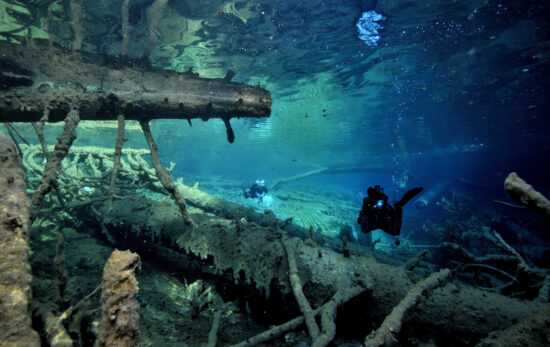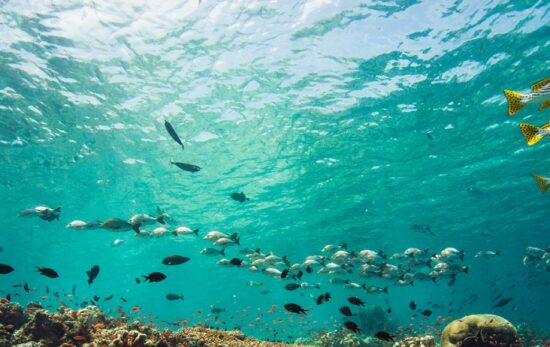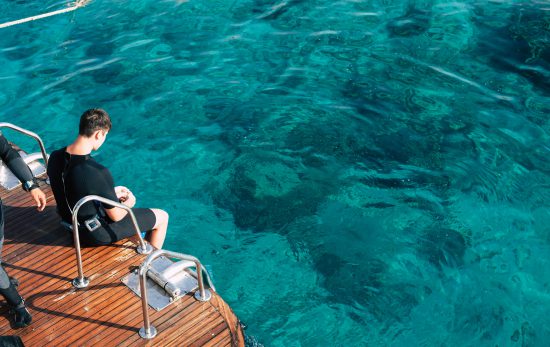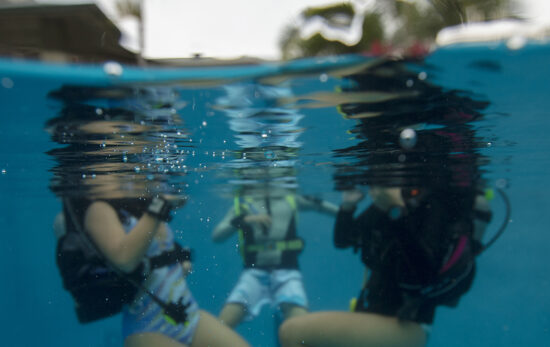Unfortunately, many new divers rely on experienced divers to navigate dive sites. And while this can be a great way to learn, wouldn’t it be better to be reliant on your own navigation skills underwater? Below, we’ll discuss why it’s important for every diver to know how to navigate any dive site before jumping into our top underwater navigation tips.
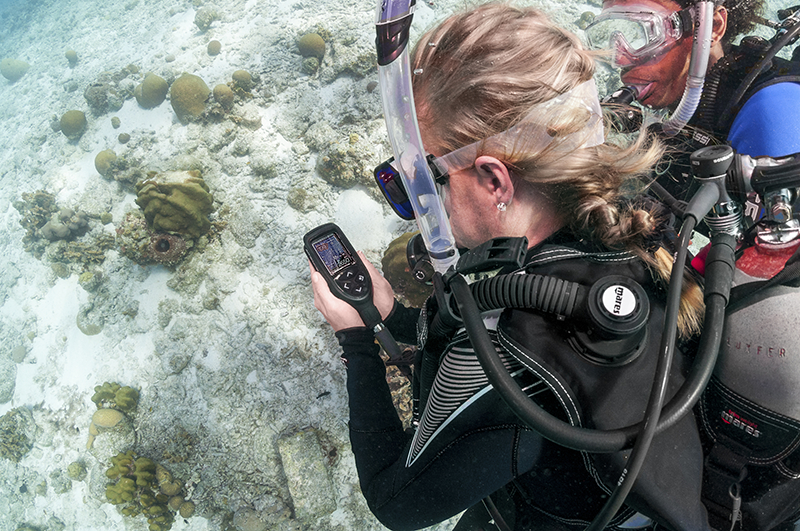
Why Underwater Navigation Skills are Vital
We probably don’t need to spell it out, but underwater navigation is one of the most important skills for scuba divers. The activity wouldn’t be much fun if you kept getting lost underwater. But, this goes well beyond the enjoyment of the sport. Underwater navigation is vital to diver safety.
Accurate navigation helps divers maintain their position, avoid getting lost, and find their way back to the entry point or the dive boat. It also reduces the risk of becoming disoriented, which can lead to panic or exhaustion.
And, being able to navigate effectively underwater can help you create and execute dive plans, communicate effectively with your dive buddy and become more self-reliant on every dive.
In short, underwater navigation is a skill you should be able to rely on during every dive.
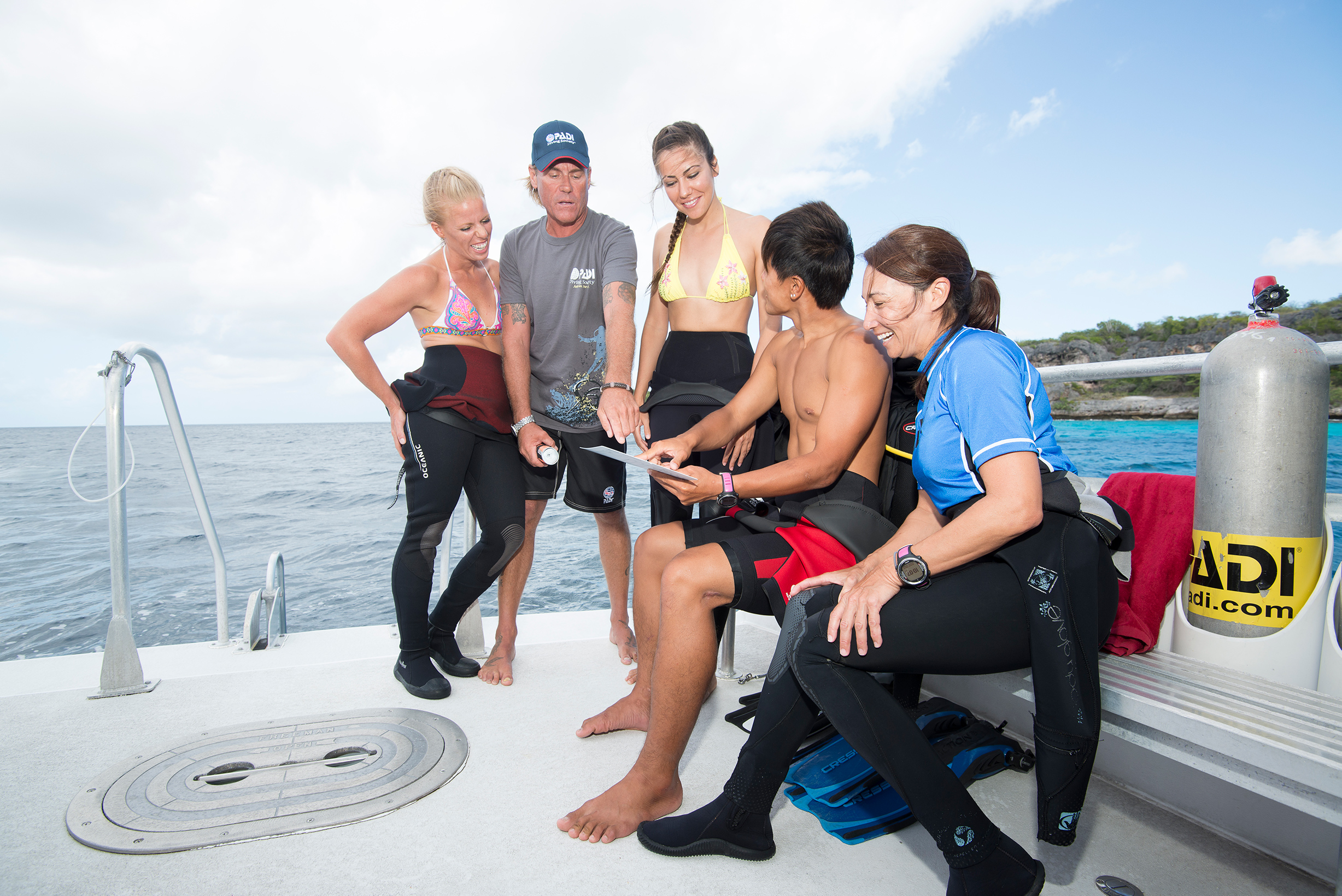
Tip #1: Plan Your Dive, Dive Your Plan
As a scuba diver, you’ve heard this a thousand times by now, but it’s so important that we don’t mind sounding like a broken record. Before any dive, you and your dive buddy should make a plan for the dive, and during the dive, you need to stick to this plan.
Prior to entering the water, discuss the navigation route you plan to take. Decide your entry point as well as where and/or when you’ll turn around (if using the same entry and exit point). Alternatively, determine your exit point, if you are, for example, planning a drift dive.
You’ll also want to familiarize yourself and your dive buddy with any underwater landmarks you may see on your dive in addition to any potential hazards you may encounter along the way. This will ensure you’re prepared for most outcomes that may impact your ability to navigate the dive site.
Even if you’ve dived the same site a thousand times, having a solid dive plan that you’ve discussed with your dive buddy is the best way to stay on course while underwater.
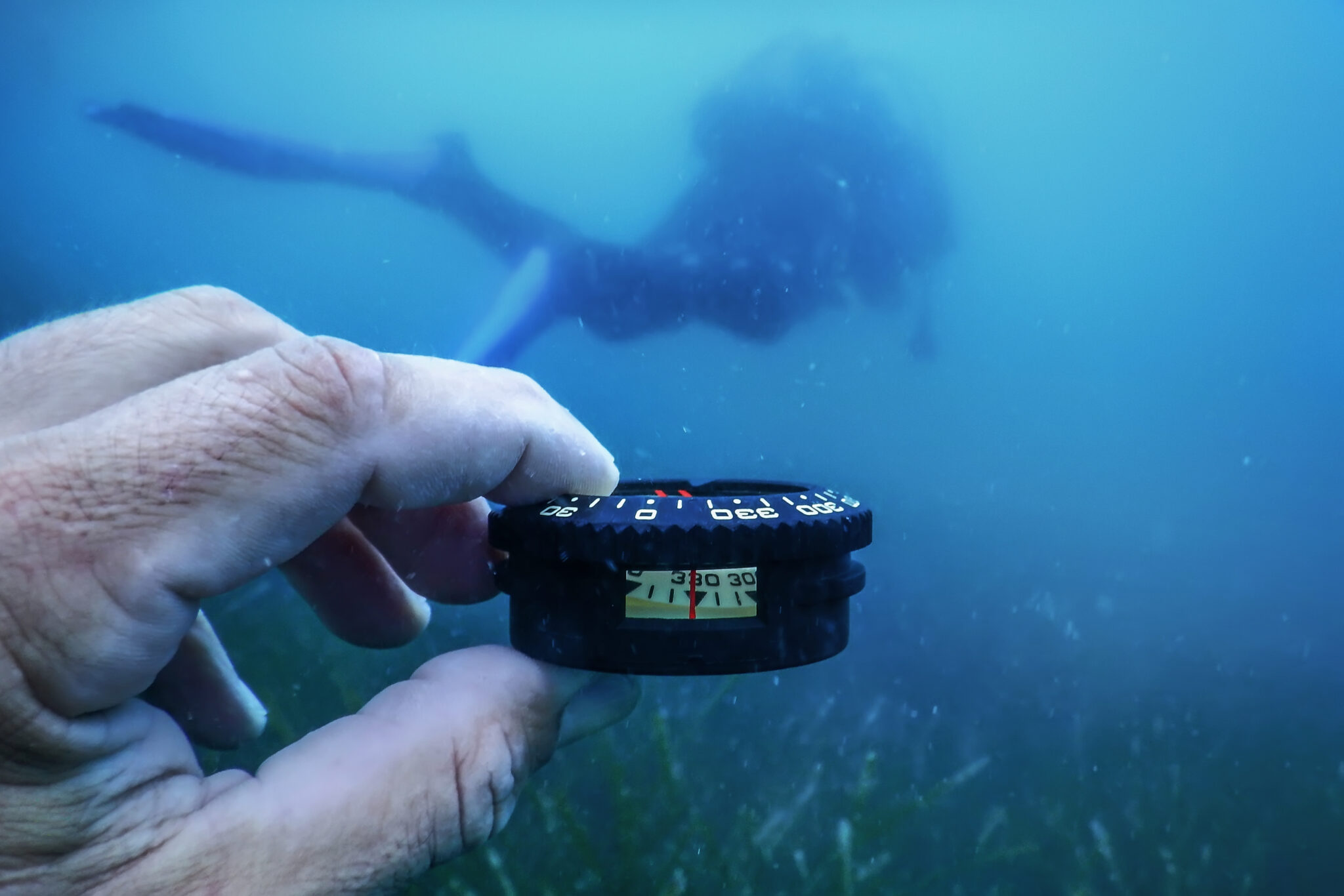
Tip #2: Don’t Dive Without a Compass
A compass is an inexpensive and important tool for underwater navigation. Be sure to learn how to use it effectively and understand how it works underwater. Many SPGs come with built-in compass. You can also buy an underwater compass to keep with the rest of your dive kit.
However, before you jump into the water thinking a compass will solve all your navigation issues, remember:
- Digital compasses need to be calibrated from time to time.
- Set your compass to point towards shore before you get in the water. This means, even if you get turned around by the time you reach the bottom of your descent, you’ll know what direction the shore is.
- A compass can still take you off-course. Use it in conjunction with natural landmarks underwater as well as a distance estimation technique.

Tip #3: Use Natural Navigation Clues
On land, we can often use the sun, the stars, buildings or even street signs to help guide our way. Underwater, there are similar natural navigation clues, you just need to know where to look. For example:
- Underwater formations – If you see a unique coral formation or odd rock, keep a mental note of it. Then, as you return to your entry/exit point, you’ll be able to spot those same underwater landmarks. This will let you know you’re still on the same route.
- Sand – Sand ripples almost always run parallel to the shore.
- Light – Much like on Earth’s surface, the direction of the sun’s light can give you clues about your heading. On morning dives, the light rays will come from the east. In the afternoon and evening dives, the light rays will come from the west.
- Depth – The seafloor tends to drop away as you move further from shore. This means that if your depth is increasing, you’re likely moving away from shore. If you are getting shallower while remaining close to the seafloor, you’re likely moving towards shore.
- Current – While not applicable 100% of the time, at some dive sites, the current will always move in the same direction. For the first half of non-drift dives, you’ll likely be heading into the current; whereas on the second half of the dive, you’ll likely be moving with the current.
- Sound – We often rely on visual clues for navigation underwater, but audible clues can help, too. For example, you may be able to hear waves crashing on nearby rocks or the hum of a boat motor where you need to surface.
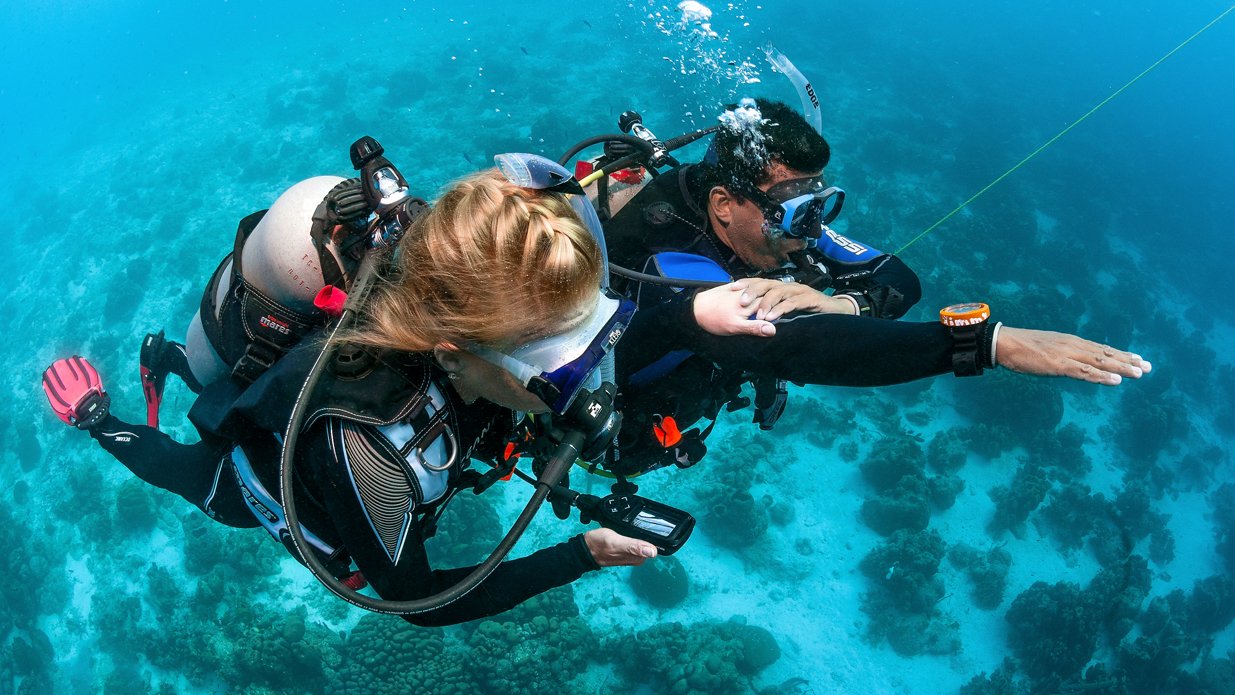
Tip #4: Employ Distance Estimation Techniques
While there are various ways for divers to estimate distances underwater, including arm spans, lines and air consumption, the most commonly used among recreational divers is counting fin kicks.
To estimate distances using fin kicks, you must first establish how many fin kick cycles it takes you to cover a set distance underwater while swimming at a normal, relaxed pace. Once you’ve calculated the number of fin kick cycles you need to cover a set distance, you can then estimate how far you’ve traveled by counting the fin kick cycles you’ve taken.
Alternatively, you can also navigate in shapes, like squares, rectangles or triangles, by counting fin kicks. Simply move in a singular direction for a certain number of fin kicks. Then make a turn using your compass and continue in that direction for the same number or a different, set number of fin kicks. For example, if you are making a square, you’d repeat this process using the same number of fin kicks and 90-degree turns four times to return to your starting point.
Do note, however, that this is not a fool-proof method for estimating distances. Current, stress, buoyancy and a number of other factors can impact the frequency with which you kick your fins. So, it’s best to combine this method with other types of underwater navigation.
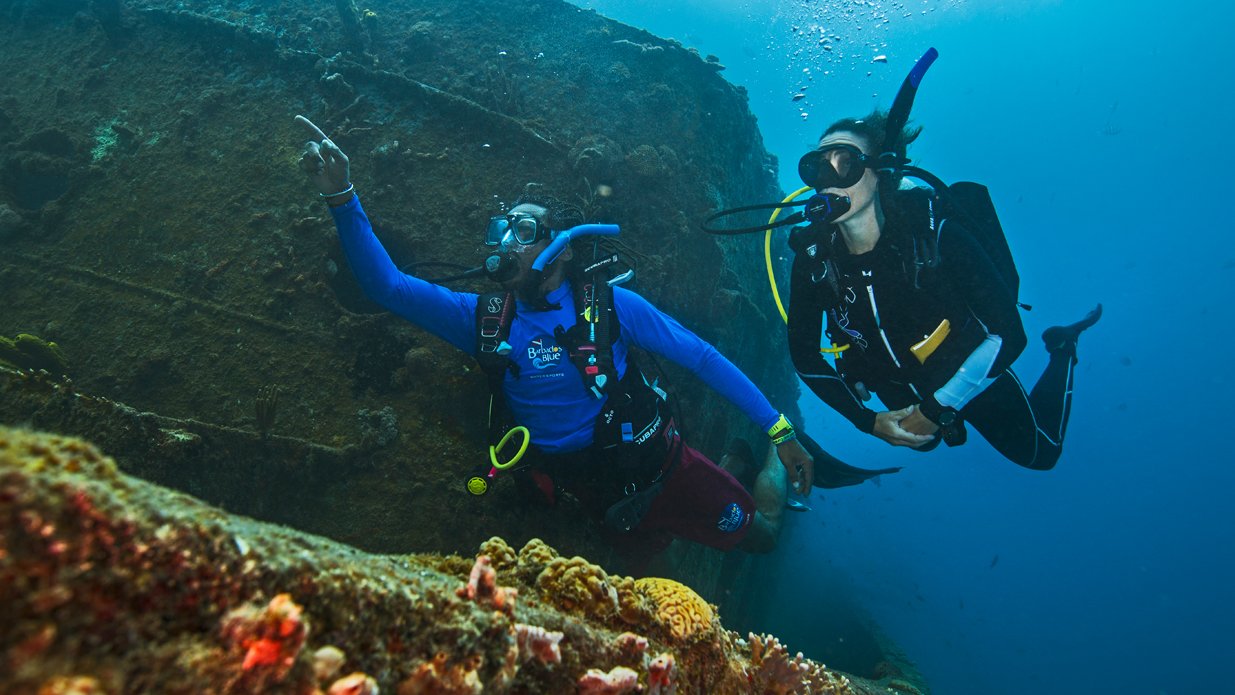
Tip #5: Stay Observant
One of the best underwater navigation tips is to stay observant throughout your entire dive. While we realize it’s easy to be lulled into a sort of moving meditation during any dive, staying aware of your surroundings will aid your ability to navigate.
As you begin your dive, pay attention. Note the topography and any changes, note the direction of currents, and, note what wildlife you see, especially the type that remains stationary or is highly territorial. If you note these in your mind, you can use them to find your way back.
These underwater navigation tips are just the beginning. Want to become an expert in finding your way through the underwater world (and we recommend that everyone does!)? Then sign up for the PADI Underwater Navigator Specialty course. This two to three-day course is one of the best specialty courses for beginners. Start on the eLearning today by clicking the button below.
Want to save 20% on your Underwater Navigator eLearning course? Sign up to PADI Club to start saving on eLearning and much more!
